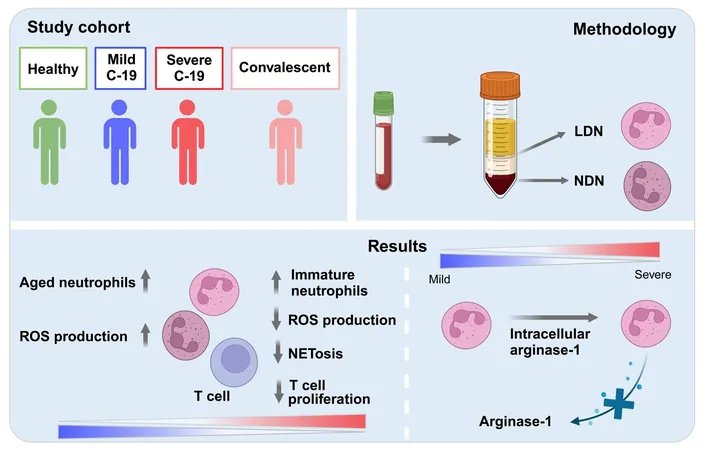
Shocking Study Reveals Comet 67P/Churyumov-Gerasimenko’s Water Might Share Similarities with Earth’s Water!
2024-12-04
Author: Yu
Groundbreaking Findings on Earth's Water Origins
In a groundbreaking turn of events, recent findings challenge long-held beliefs about the origins of Earth’s water, suggesting that comets like 67P/Churyumov-Gerasimenko might have played a crucial role in delivering water to our planet. This revelation contradicts previous studies and reignites discussions among scientists about how our world became abundant with liquid water—a vital element for life as we know it.
Decades of Debate
For centuries, researchers have debated how Earth, with its prime position in the solar system, came to possess such vast oceans. While some theories posit that Earth's water originated from volcanic activity and condensation, others highlight the potential contributions from asteroids and comets colliding with the planet’s surface during its formative years, around 4.6 billion years ago.
Jupiter-family Comets
Previously, measurements collected from Jupiter-family comets indicated a notable connection between their water and Earth's. Scientists employed the ratio of deuterium (D) to regular hydrogen (H)—a crucial isotopic signature that aids in tracing water sources throughout the solar system. The outcome suggested that water from these distant celestial bodies may share similarities with Earth's own, further solidifying the hypothesis that comets could have seeded our planet's oceans.
Surprising Discoveries from the Rosetta Mission
However, an unexpected twist unfolded during the European Space Agency’s Rosetta mission, which studied 67P/Churyumov-Gerasimenko. The mission's findings revealed that the comet contained an unexpectedly high level of deuterium, approximately three times greater than that found in Earth’s oceans! This startling discovery led scientists to reconsider the role of Jupiter-family comets in Earth's water delivery narrative.
Reinvestigation and New Insights
Leading the research, Dr. Kathleen Mandt from NASA’s Goddard Space Flight Center and her team recognized the need to reinvestigate these measurements. Employing advanced statistical-computation techniques, they analyzed over 16,000 measurements taken from Rosetta to better understand the variability of hydrogen isotope ratios in the comet's water.
Impact of Dust on Measurements
Their investigation revealed that the comet's dust could significantly impact these readings. It turns out that as comets move closer to the Sun, they release gas and dust containing water ice, with the ice adhering preferentially to dust grains. This could skew the isotopic readings, making the comet appear to have a higher deuterium concentration than it actually does.
Game-Changing Implications
The implications are enormous: this study not only alters our understanding of where Earth’s water originated but also reshapes our general perspective on cometary observations. The researchers found a clear correlation between the deuterium measurements taken and the amount of dust surrounding the spacecraft during the mission.
Future Exploration Prospects
"By revealing how the dust affects water measurements, we can better interpret past observations and improve future comet studies," Dr. Mandt noted, laying the groundwork for new, game-changing explorations of our solar system's formation.
Publication and Future Inquiry
This exciting research, titled "A nearly terrestrial D/H for comet 67P/Churyumov-Gerasimenko," has been published in *Science Advances*, opening up myriad opportunities for future investigations into the role of comets in the solar system's complex water story.
Conclusion: Exploring Cosmic Origins
As we continue to unravel the mysteries of our cosmic origins, one question remains: Could this breakthrough lead to a deeper understanding of life’s existence beyond Earth? Researchers and enthusiasts alike are poised on the edge of discovery, eager to uncover what else lies hidden in the depths of space!





 Brasil (PT)
Brasil (PT)
 Canada (EN)
Canada (EN)
 Chile (ES)
Chile (ES)
 España (ES)
España (ES)
 France (FR)
France (FR)
 Hong Kong (EN)
Hong Kong (EN)
 Italia (IT)
Italia (IT)
 日本 (JA)
日本 (JA)
 Magyarország (HU)
Magyarország (HU)
 Norge (NO)
Norge (NO)
 Polska (PL)
Polska (PL)
 Schweiz (DE)
Schweiz (DE)
 Singapore (EN)
Singapore (EN)
 Sverige (SV)
Sverige (SV)
 Suomi (FI)
Suomi (FI)
 Türkiye (TR)
Türkiye (TR)